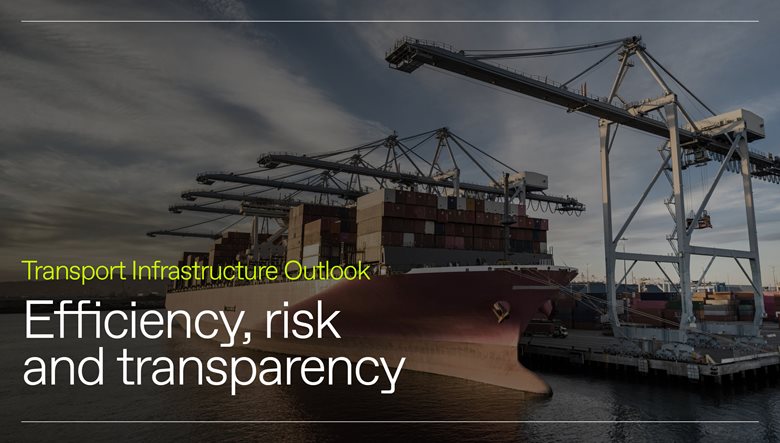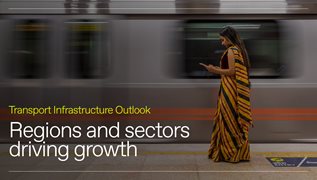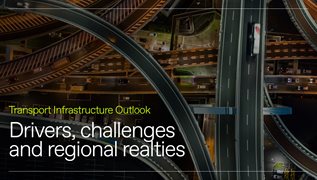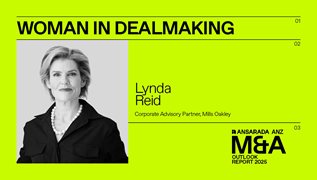Transport infrastructure procurement fundamentals: Efficiency, risk and transparency
Trust between project partners is centered on these three project essentials.
By AnsaradaTue May 13 2025Industry news and trends, Innovation, Tenders

There’s a direct correlation between economic development and transport infrastructure procurement around the world.
With massive, multi-year projects such Indonesia’s Jakarta-Bandung High-Speed Rail and Vietnam’s North-South Expressway being built right now, there must be a sense of urgency in Asia-Pacific to modernize procurement processes. Meanwhile, regions like the Americas and EMEA are using technology and advanced governance to drive efficiencies for major transport initiatives.
Nevertheless, efficiency is just one aspect of a successful project, be it a railway, a bridge or major road. Transparency between the stakeholders and proper risk allocation are vital.
Drawing on global survey data and expert insights in our 2025 Transport Infrastructure Outlook Report, developed in partnership with Infralogic, this blog explores the state of transport infrastructure procurement in 2025. While regional disparities and persistent pain points exist, solutions are emerging to address these challenges.
Mind the gap: a mixed global picture
Efficient procurement processes directly impact project timelines, cost control and public trust, especially for taxpayer-funded work. As our research shows, there are divergent efficiency levels in procurement processes around the world and opportunities in some regions to improve this measure.
For instance, 62% of the executives surveyed for the research rated their most recent procurement process as very efficient or somewhat efficient for projects valued at $35 million or more. Yet a significant 35% described processes as somewhat or extremely inefficient.
On a regional basis, the Americas (where 68% of respondents say procurement processes are efficient) and EMEA (70%) have the highest scores, thanks to streamlined procurement frameworks and digital tools.
But 44% of respondents in Asia Pacific say their procurement processes are inefficient, flagging bottlenecks, outdated tendering methods, inconsistent documentation and manual workflows as handbrakes.
Craig McMahon, Business Development Director in ANZ at Ansarada attributes Asia Pacific’s lower efficiency levels to legacy systems.
“Overly complex procedures and gaps in stakeholder engagement persist. Manual and disparate systems create unnecessary inefficiencies,” he says.
By contrast, the Americas and EMEA benefit from purpose-built digital platforms to automate workflows, enhance stakeholder collaboration and centralize documentation.
Given massive government investment into infrastructure in Asia, there must be a sense of urgency to modernize infrastructure procurement.
Balancing risks in a seller’s market
Risk allocation is at the heart of infrastructure procurement, with the division of financial, operational and regulatory responsibilities between stakeholders critical to avoid disputes and cost overruns. Yet risk management levels vary on a regional basis in a similar way to the efficiency data.
While 63% of respondents to the research view their risk allocation strategies as very or somewhat effective, regional nuances exist. In the Americas, 68% of respondents say risk allocation is efficient or very efficient, with a similar result (66%) in EMEA. Asia Pacific lags these markets, with 54% stating risk allocation is efficient or very efficient.
In a high inflation environment, the temptation is to pass risk to other stakeholders involved in a project. Yet Tom Carey, Partner, Infrastructure and Capital Projects at EY Ireland, warns against overloading contractors as a risk management tool.
“Too often, clients look to transfer as much risk as possible onto contractors, but that approach is becoming less viable. The market is more selective, and if the balance isn’t right, you’ll struggle to attract bidders or face inflated prices to compensate for the perceived risk,” he says.
Transparency is a non-negotiable pillar
Transparency and auditability are universally recognized as foundational to procurement integrity, with 69% of respondents deeming transparency to be essential or very important. Echoing the efficiency and risk results, regional priorities around transparency differ.
In the Americas, 44% of respondents say transparency is essential, with this high number reflecting the litigious society and high levels of public scrutiny.
The US and Canada excel in tech-driven procurement, leading in areas such as AI-powered tender platforms. Latin America, meanwhile, struggles with corruption risks, although Chile and Brazil are making strides with open-data portals.
In EMEA, where 36% of respondents say transparency is essential, bureaucratic layers can slow processes. In Asia Pacific 32% of respondents say transparency is essential, with this lower figure emblematic of nascent regulatory environments, aside from Singapore and Australia.
“Every government emphasizes transparency, but the degree of emphasis on probity varies. In some countries, the risks of legal challenges are higher, which naturally drives stricter transparency measures compared to others,” says Andy Potter, Business Development Director EMEA at Ansarada.
Turning to internal versus external transparency, 58% respondents from the Americas rate processes as entirely or very transparent to internal teams. At the other end of the scale, in Asia Pacific only 40% report strong internal transparency, hampered by siloed departments and manual reporting.
Tech strategies to drive growth
With so much variation around the world when it comes to transport procurement, industry leaders are calling for a multipronged approach to modernize operations and strengthen resilience. Central to this strategy is the rapid integration of cutting-edge technologies such as artificial intelligence (AI), blockchain and the Internet of Things (IoT).
By automating workflows and enabling real-time monitoring, these tools promise to reduce inefficiencies and enhance decision-making, particularly in complex infrastructure and supply chain environments.
As Craig Covil, Principal and Managing Director of C2 Consulting explains, digital platforms make managing data more efficient.
“They provide layered security, control who sees what and ensure bidders receive information at the same time. Crucially, they create an auditable process – so if an owner provides a hundred years’ worth of geological data in the data room a few weeks before the bid deadline, there’s a record of that,” he says.
Equally vital is the push for deeper collaboration with local communities and contractors at the earliest stages of project planning.
Proactive engagement, advocates argue, can prevent costly disputes and delays by clarifying expectations, addressing cultural or environmental sensitivities and fostering shared ownership of outcomes.


